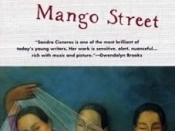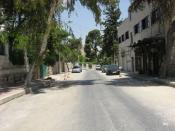Maturing is a gradual process that children go through which takes many years for them to develop. In The House on Mango Street, girls in the barrios of Chicago like Esperanza have difficulty growing up due to their poverty-stricken circumstances. Sandra Cisneros writes about a girl growing up in hardship all around with a small house, being made fun of at school, even rape, yet the strength of Esperanza shines through 'til the end as a strong Latino girl. Cisneros relays a strong theme of sexism and coming of age, as the innocence of girls in the barrio can be taken lightly and quickly.
Esperanza, the main character, also the narrator in The House on Mango Street, lived in the barrios of Chicago, more specifically on Mango Street. All our information about her come from her, and our knowledge of other characters also comes from her; who understands them on her own level.
"Everybody in our family has different hair. My papa's hair is like a broom, all up in the air. And me, my hair is lazy. It never obeys barrettes or bands. Carlos' hair is thick and straight. He doesn't need to comb it. Nenny's hair is slippery-slides out of your hand. And Kiki, who is youngest, has hair like fur."(Cisneros 6) Her life is recorded throughout the year between her age of twelve and thirteen.
Conflicts in the story often arise because of Esperanza's misunderstanding of herself. For example, she makes fun of her sick aunt, then realizes how much she values her aunt's friendship, and feels terrible about what she has done. Her shyness is another aspect of her immaturity that forces conflict upon her: she wants to be like bolder girls she knows, who have secret meetings with boys, but does not have...


